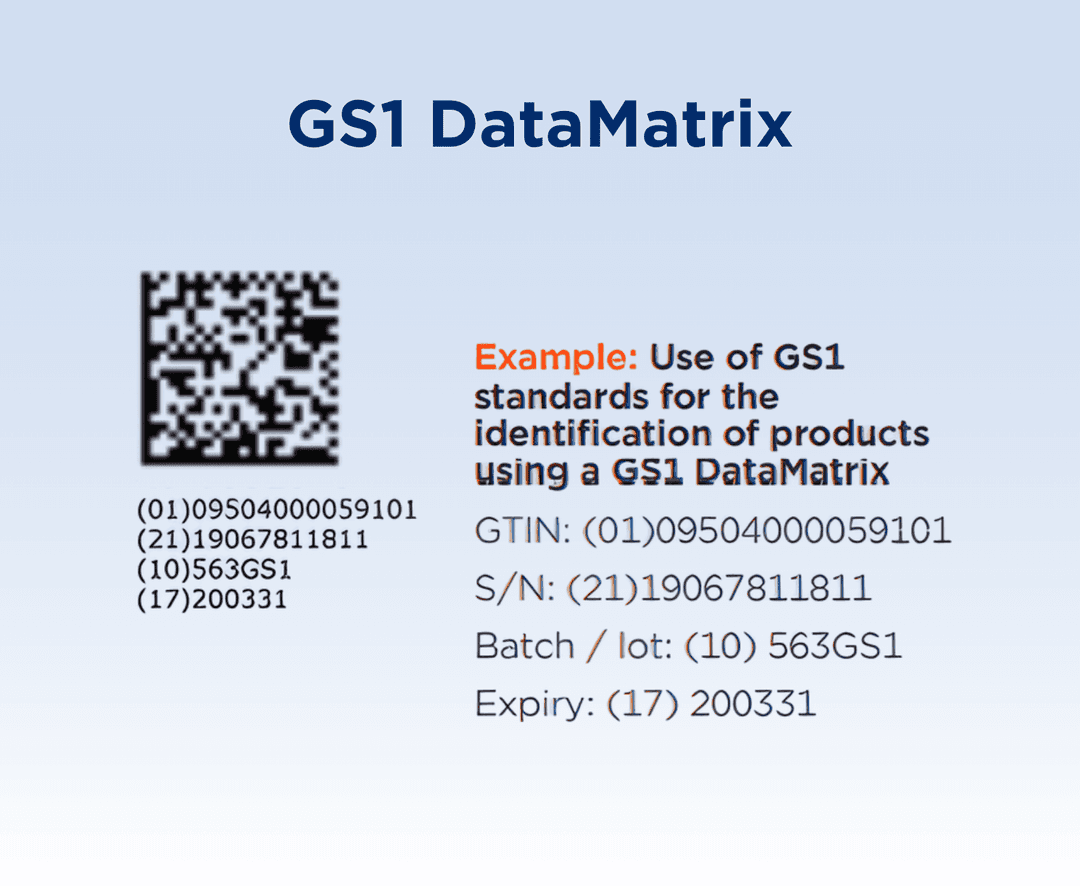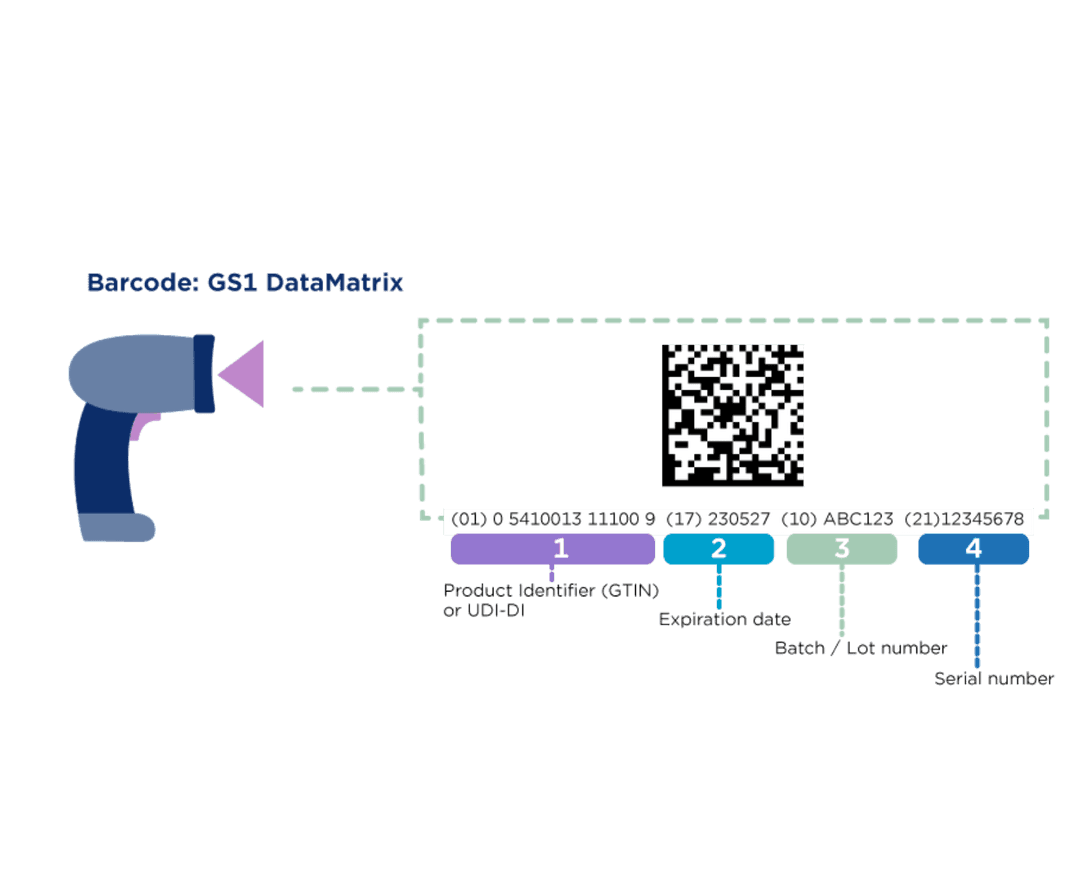

Industries today stand at the cusp of a digital revolution. Supply chain plays a central role in enabling this transformation as organisations shift from fragmented, paper-based processes to smart, interoperable systems. By acting as a link between products, people, and processes, the supply chain accelerates the transition. The healthcare industry is no exception to this digital revolution. From caregivers to patients, everyone needs accurate information accessible in real-time. This is where the GS1 DataMatrix barcode comes into play. In this blog, we will provide a detailed overview of everything you need to know about GS1 DataMatrix and its applications and benefits in the healthcare industry.

GS1 DataMatrix is a 2D or two-dimensional barcode, which may be printed as a square or rectangular symbol composed of individual dots and squares and bordered by a finder pattern. It can store large amounts of data in a compact space, making it ideal for smaller items or components. It is the preferred choice of the healthcare industry for the following reasons –
The GS1 DataMatrix barcode comes with built-in error correction and detection capabilities. This allows stakeholders to read the data encoded in this barcode despite irregular packaging or minor physical damage.
Please note that the GS1 DataMatrix barcode is also used in other industries such as electronics, aerospace, and automotive, but is still uniquely suited for the healthcare industry.

DataMatrix barcode is composed of two separate parts – the finder pattern and the encoded data. The finder pattern is used by the scanner to locate the symbol and defines the shape of the barcode (whether square or rectangular), the size, X-dimension, and the number of rows and columns.
The solid dark covering the matrix is called the ‘L finder pattern’. This pattern is specifically used to determine the size, orientation, and distortion of the symbol.
Data is encoded in a matrix within this finder pattern. Similar to a linear barcode, the GS1 DataMatrix barcode also has a mandatory quiet zone. It is the light area within the barcode that does not contain any graphics to avoid disruptions while reading.
GS1 DataMatrix barcode meets the very specific requirements of pharmaceutical and medical device identification. By providing global standards-based automatic identification of medical drugs/devices, GS1 DataMatrix provides opportunities to enable safer, more efficient, and more accurate healthcare supply chains. Below are a few advantages of applying GS1 DataMatrix on pharma products –
Recall/Patient Safety – Due to its ability to encode variable data, including batch/lot number, it facilitates efficient recall management. As soon as pharma drugs/devices are found to be sub-standard or spurious, prompt recall/removal of the affected product batch can be initiated by the concerned stakeholders.
Inventory Management – By encoding manufacturing details in a GS1 DataMatrix barcode, businesses can carry seamless management of their inventory, leveraging FIFO principles. This can further assist in efficient stock rotation and reduce stock wastage.
Traceability – This 2D barcode allows the encoding of granular data, thus forming a chain of custody for a more secure and traceable product supply chain.
More Packaging Label Space – Since GS1 DataMatrix is compact, it frees up a lot of label space on drug/medical device packaging. More information can be encoded in a smaller space, allowing clinicians/patients to read information more clearly.
Data Accessibility – Data in a GS1 DataMatrix barcode can be easily accessed upon scanning through smartphones by healthcare stakeholders. GS1 Digital Link-based GS1 Data Matrix barcode can further allow stakeholders to visit the company’s site for authentic data.
One Product, One Barcode - GS1 DataMatrix barcode reduces the need to have multiple barcodes on a single product. This makes the scanning process across the supply chain clearer and simpler.

A GS1 DataMatrix barcode is the preferred choice of the healthcare industry and is applied to medical drugs/devices, whereas a QR code is mostly used in other industries like retail.
DataMatrix can hold up to 2335 alphanumeric characters or 3116 numeric data.
No, to apply a GS1 DataMatrix barcode, you first need to get registered for barcodes with GS1. Follow this link to start your registration process.
Yes, a GS1 DataMatrix barcode can be easily scanned via a smartphone.
DataMatrix is of two sizes – square and rectangular. Depending on your business requirements, you may choose either of the two.
Your email address will not be published. Required fields are marked *